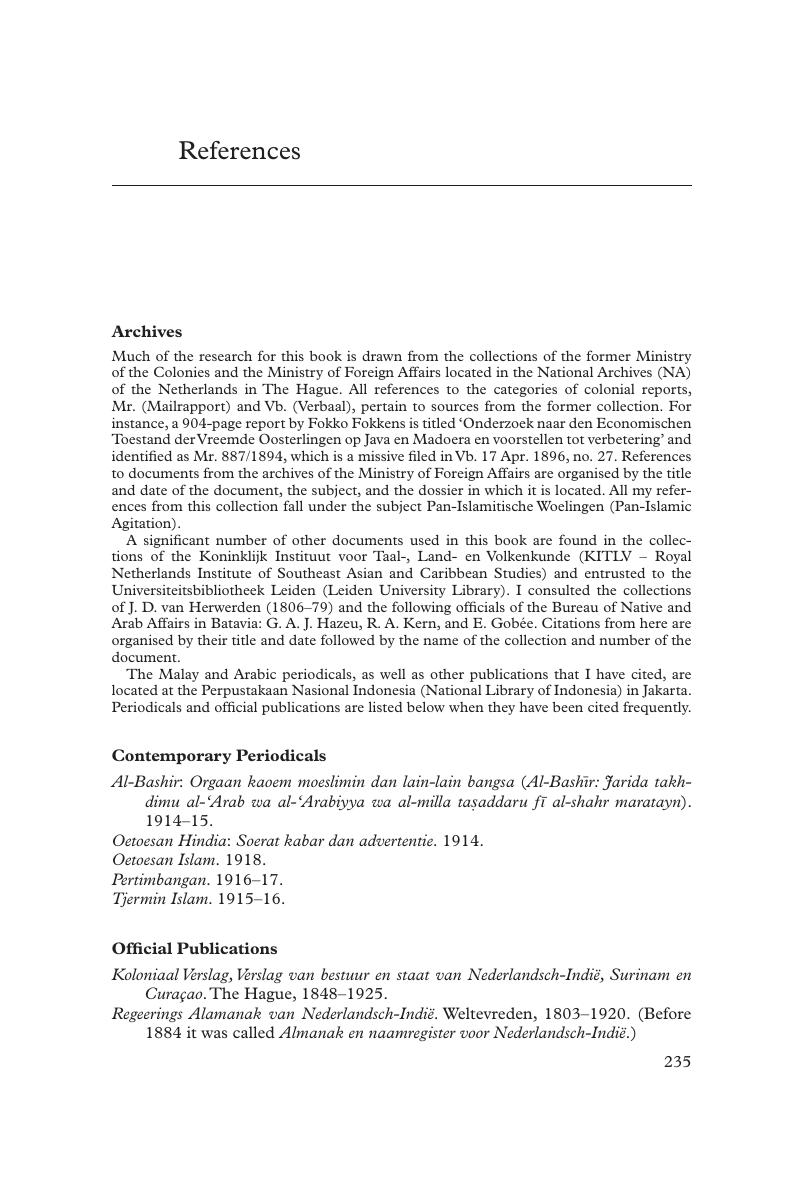Book contents
- Becoming Arab
- Asian Connections
- Becoming Arab
- Copyright page
- Dedication
- Contents
- Figures
- Maps
- Tables
- Acknowledgements
- Note on Transliteration
- Maps
- Prologue
- Introduction
- Part I A Creole Malay World
- Part II Colonial Transformation
- Part III Modern Identity
- Conclusion
- Epilogue
- Glossary
- References
- Index
- References
References
Published online by Cambridge University Press: 04 November 2017
- Becoming Arab
- Asian Connections
- Becoming Arab
- Copyright page
- Dedication
- Contents
- Figures
- Maps
- Tables
- Acknowledgements
- Note on Transliteration
- Maps
- Prologue
- Introduction
- Part I A Creole Malay World
- Part II Colonial Transformation
- Part III Modern Identity
- Conclusion
- Epilogue
- Glossary
- References
- Index
- References
Summary

- Type
- Chapter
- Information
- Becoming ArabCreole Histories and Modern Identity in the Malay World, pp. 235 - 248Publisher: Cambridge University PressPrint publication year: 2017

